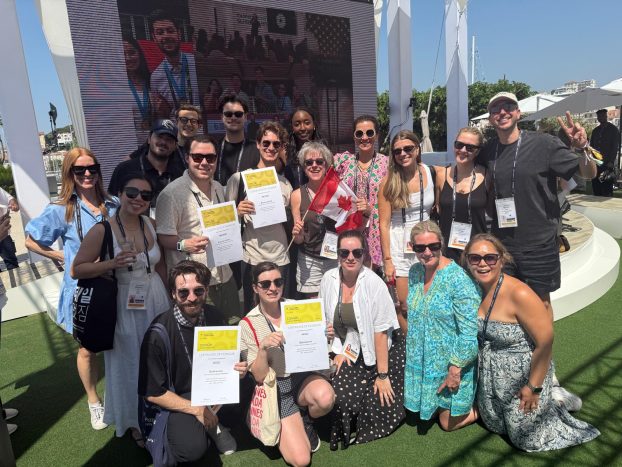For the past five years, a pioneering interactive agency has led a quiet revolution in healthcare marketing – and today, even the most conservative pharmaceutical companies are riding the surging wave of change.
It all began in 1995 when Dr. John Reeves noticed that an increasing number of his patients were educating themselves medically through the Internet – and a vision was born. Leaving his full-time family practice, he teamed up with Steve Melles, an experienced pharmaceutical marketer, to form Infinet Communications, a dynamic, 25-person firm uniquely positioned to understand the separate-yet-complementary needs of doctors, patients, and pharmaceutical companies. Blending medical, marketing and technological expertise, Infinet is rapidly blazing new trails in eHealth, both nationally and globally.
The agency first made headlines in 1996 when it launched Sympatico’s HealthyWay, Canada’s first consumer healthcare information portal. More recently, Infinet helmed the online launch of Viagra and will soon break the Internet portion of the Celebrex campaign – two of the most successful pharmaceutical brands in recent history.
Reeves and Melles say that the growing prominence of the Internet as a consumer information resource makes it strategically crucial to the healthcare marketing mix.
"The age-old relationship between physician and patient is being fundamentally re-shaped by the Internet," says Dr. Reeves. "Patients are no longer waiting for their next checkup to obtain medical information and regulations make it difficult for pharmaceutical companies to speak directly to consumers using traditional media. The Web presents a golden opportunity, allowing them to embed themselves deeply into the emerging new paradigm of healthcare relationships.
"Since physicians are no longer the sole gatekeepers to medical information, pharma companies have an opportunity to become key players in the industry as providers of value-added content and applications."
Reeves and Melles have been patiently educating clients – hospitals, patient associations, leading professional publications and major pharmaceutical companies – about how the Web is transforming traditional marketing. Pushing clients to think globally, they and their team of strategists work closely with product managers to develop end-to-end e-business plans, integrating capabilities like physician research, ePR, direct e-mail marketing, Web site development and monthly roi analysis.
"Our clients are not just speaking to a mass consumer audience," says Reeves, but to segmented audiences of consumers, patients, physicians, pharmacists and journalists. "It’s essential to understand how each segment will respond to marketing messages.
"Unless you really immerse yourself and learn how to link e-health campaigns, sponsorships and strategic media buys, you’re not going to understand how it all comes together to impact roi."
Infinet applied this insight to the development of the Canadian Web site for erectile dysfunction drug Viagra (viagra.ca). Supporting the traditional components of the heralded medication’s Canadian launch campaign, viagra.ca quickly educated doctors across the country about a new category of illness that most hadn’t learned about in medical school.
"When doctors encountered the onslaught of male patients looking for Viagra, they were prepared to handle them with an accurate diagnosis and treatment plan" notes Reeves. "Used strategically as a rapid information dissemination tool, viagra.ca was able to effectively do the work of a much larger sales rep force."
The site’s unbranded consumer area, meanwhile, offered Canadian men unsure of their medical status a discreet online education program to determine clinically
whether or not they were exhibiting symptoms of erectile dysfunction – motivating those with symptoms to visit a physician.
Based on Viagra.ca’s success, Infinet has been pushing clients to take the segmented approach to the next level with dynamic, database-driven solutions. Moving beyond static content pages, the dynamic site approach allows clients to customize messages and graphic interfaces based on product, or even the geographic location of the user. A recently launched corporate Web site for a major Canadian healthcare company exemplifies this approach, relying on a stocked content and application database that feeds the corporate and product areas of the site with targeted content.
"Whether people visit a client’s corporate site or one of the product
specific sites, they access the same content and applications through a
number of highly customized user interfaces." explains Melles. "This allows clients to build one back-end database and leverage it into several versions to maximize branding, whether corporate or product specific.
"This same concept is particularly effective for global branding applications. Companies can build one comprehensive content and application database, and allow affiliate brand managers around the world to leverage these assets to develop regionally customized versions for local consumption. In this way smaller affiliates can afford to present world class Web offerings by
participating in a centralized initiative."
The strength of this model recently helped the agency land the global online business for a European-based pharmaceutical brand – its first major international contract and eloquent testimony to the power of Infinet’s message.
"E-Health marketing creates enduring, permission-based relationships between patients and healthcare brands by evolving an ongoing dialogue," says Melles. "Whether it be through interactive patient compliance tools, online CME programs or electronic newsletters, we can establish a client’s site as the credible destination for healthcare information within a given therapeutic area or areas."
Also in this report:
– Overview




























